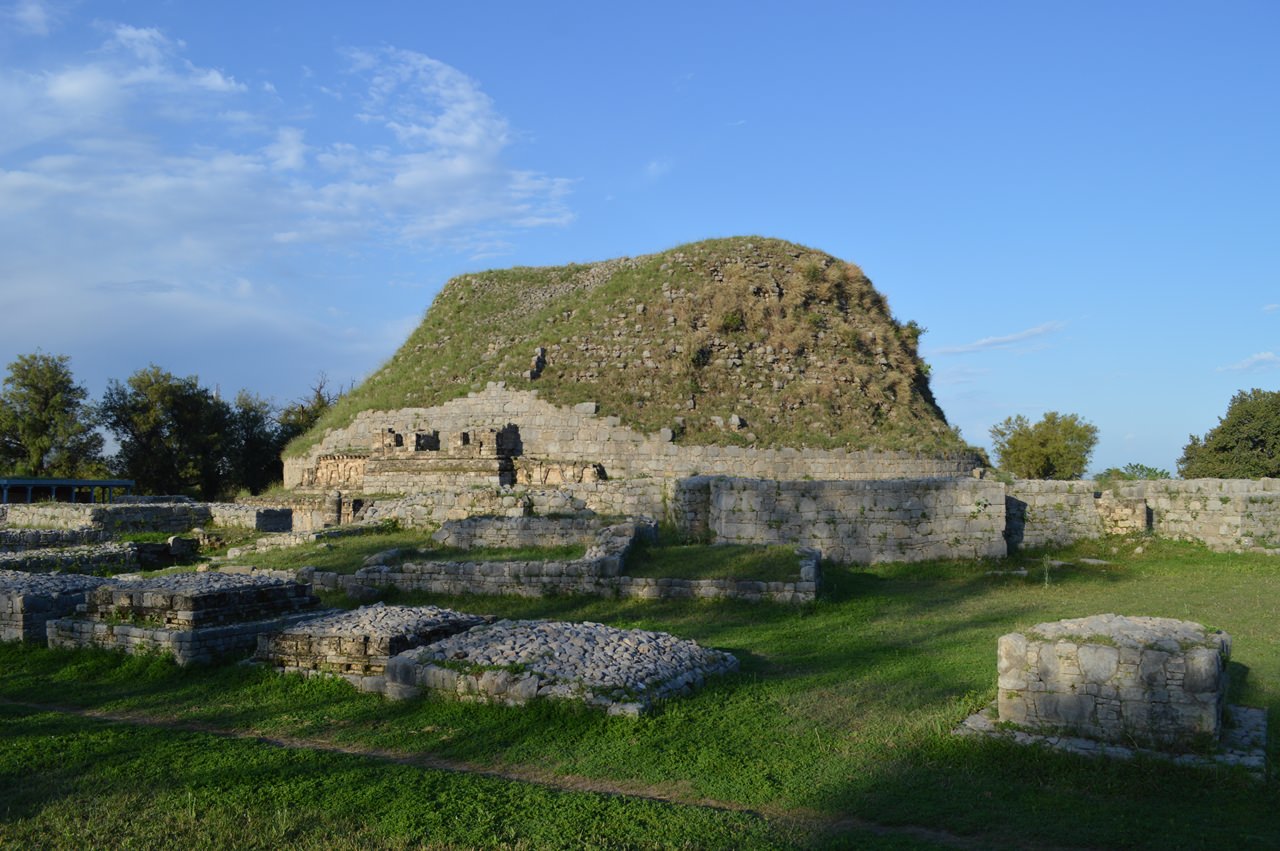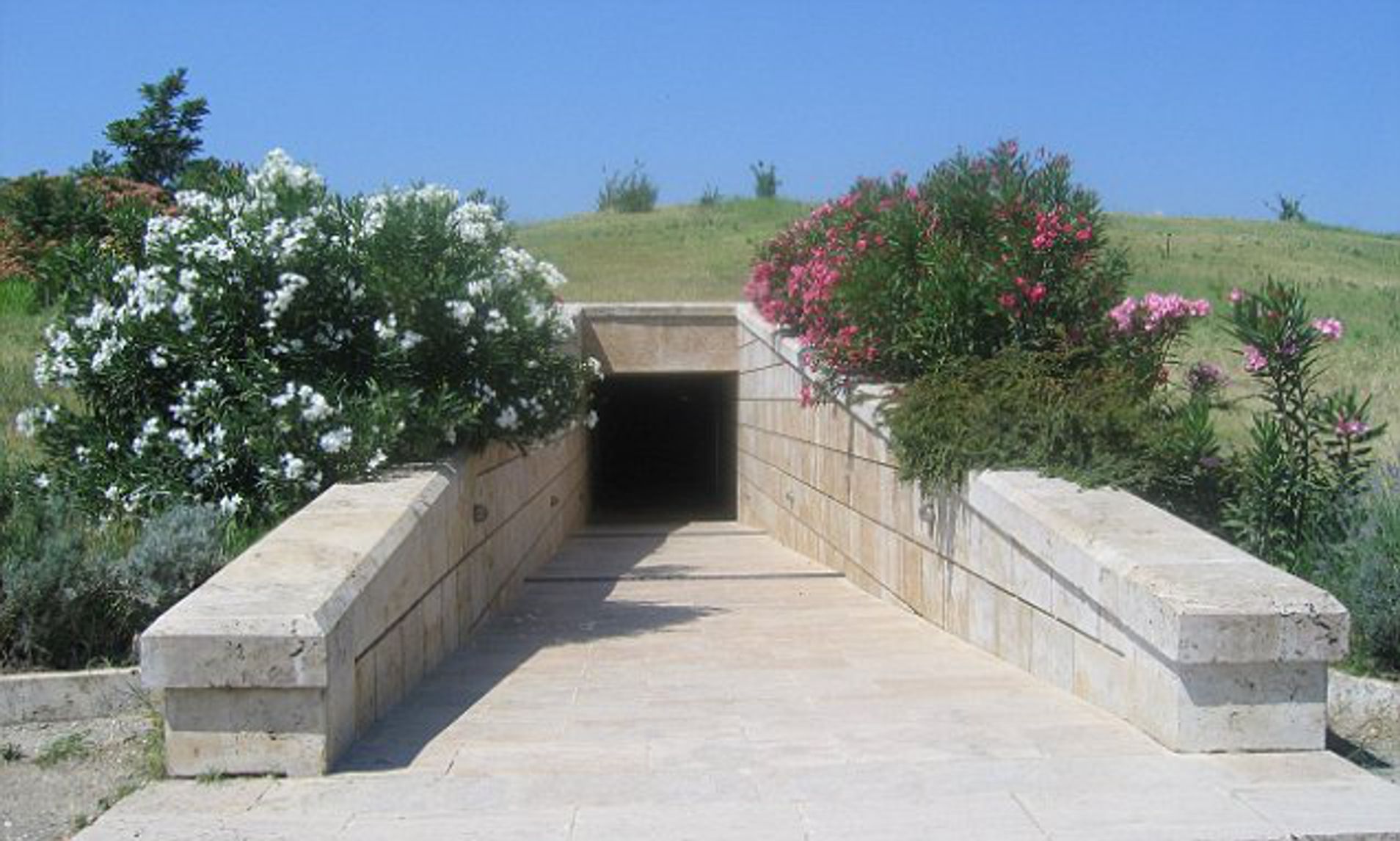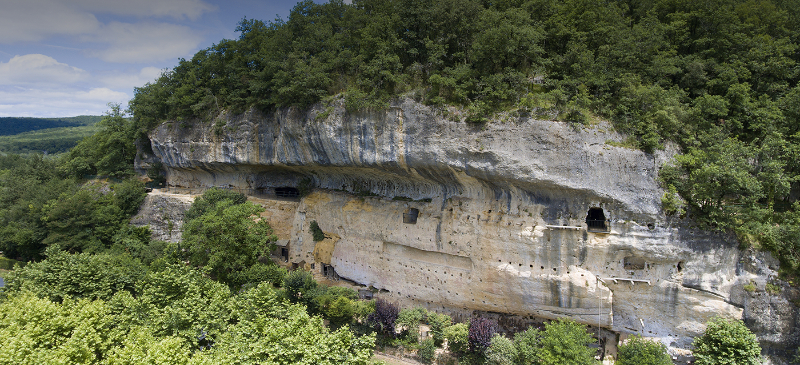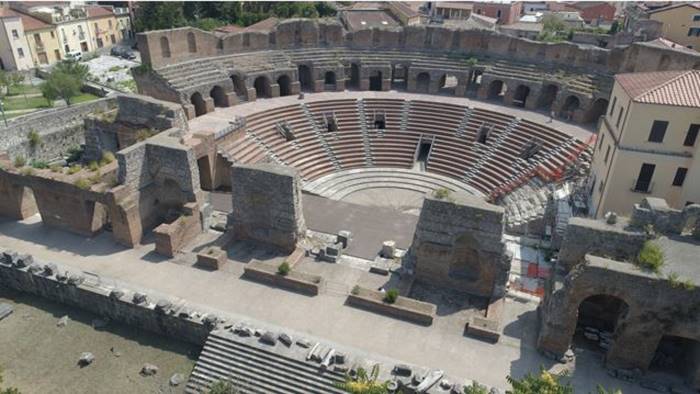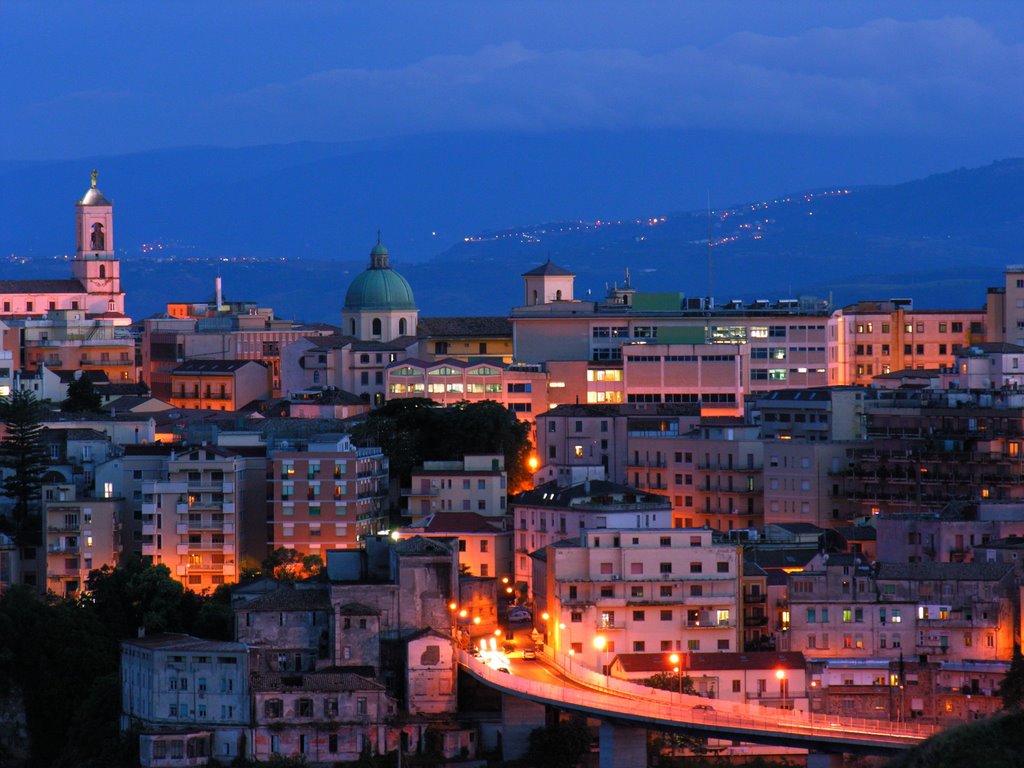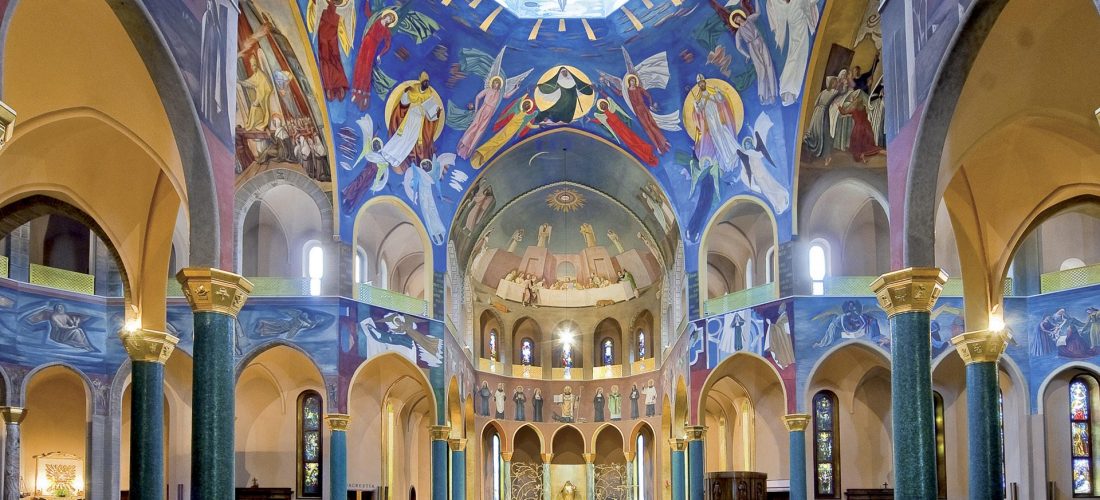Taxila or Tassila is an archaeological site in the Punjab province of Pakistan.It is probably Ptolemy’s Takasoma.Taxila was an ancient centre of Buddhist study, connected to the Silk Road via the Khunjerab pass and was therefore frequented by students from all over the Buddhist world. The site was in continuous expansion between the 5th and 1st centuries BC becoming, with Peshawar, one of the two main centres of the Kingdom of Gandhāra. Situated at the junction of three important trade routes, it also played a very important economic and military role.Darius I of Persia annexed Taxila to the Achaemenid Empire in 518 BC. Alexander the Great conquered it in 326 BC, leaving behind a garrison of Macedonians who lost the city in 317 BC to Chandragupta Maurya, who conquered all of Punjab, and his successors including his nephew Aśoka who was to carry out his studies there.
Shortly after Aśoka’s death, Taxila was recaptured by the Greek ruler of the Greco-Battrian Kingdom Demetrius I, remaining in the Indo-Greek Kingdom until about 90 BC, when the city was conquered by the Scythians; it then passed to the Parthians in 19 and to the Kushans in 78, whose reign was to be destroyed by the Shvetahūna or White Huns, who destroyed the city in 455.
Foundations of the Sirkap stupa, decorated with Hindu, Buddhist and Greek artworks
Several settlements were founded in the area.Separated by a stream is the site of Sirkap, probably founded by Indo-Greek satraps where archaeologist Sir John Hubert Marshall carried out a series of excavations between 1912 and 1935. Sirkap was organized as a chessboard divided by a large central street, on the sides of which stood the commercial shops, interspersed with religious monuments, including the Absidal Temple and the "sacellum of the Two-headed Eagle". Among the various monasteries erected on the site, the most important is the Dharmarajika stupa, consisting of a large domed stupa, surrounded by a good number of smaller stupas and other sacred monuments, which retain architectural and figurative decorations.
